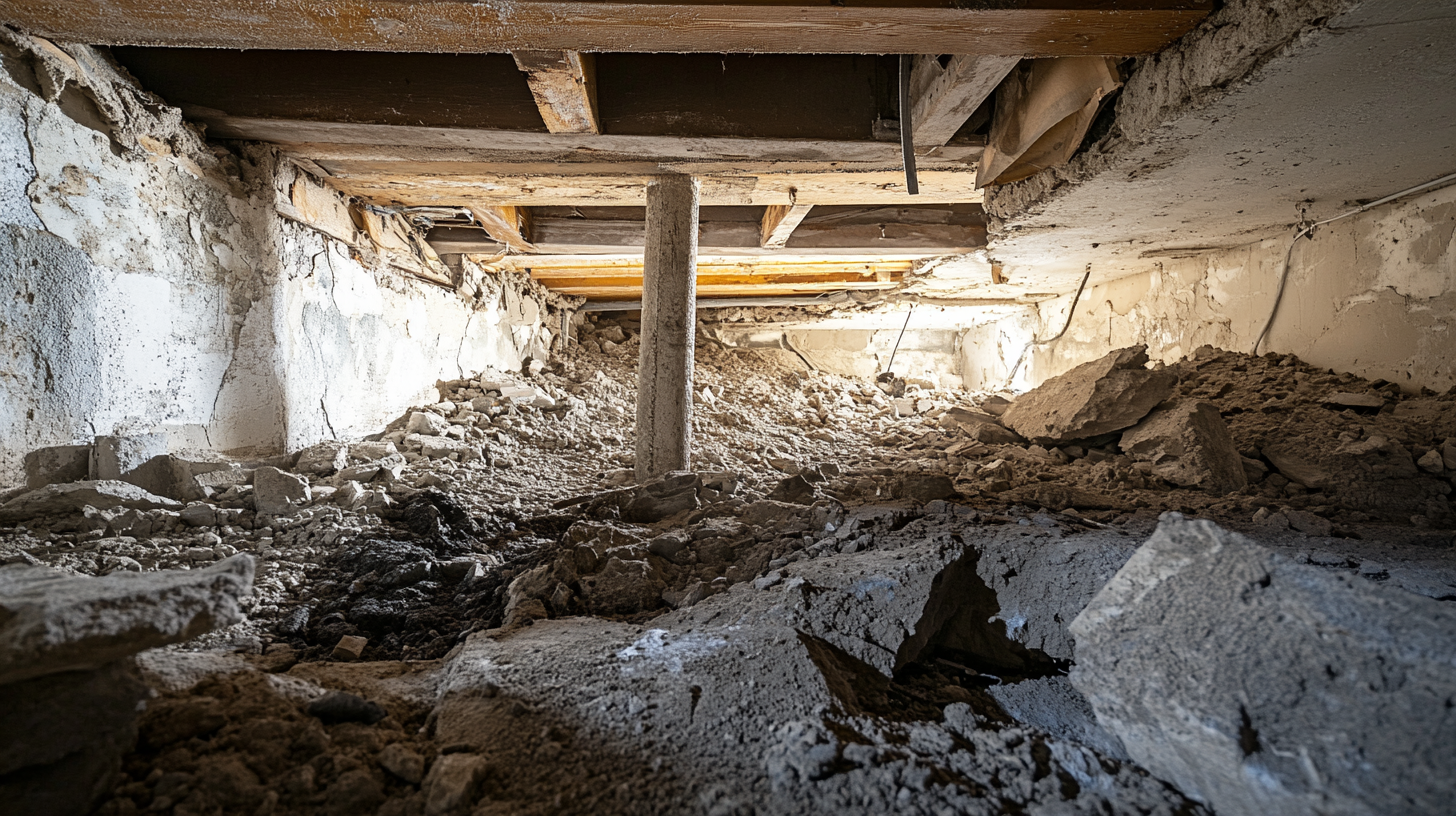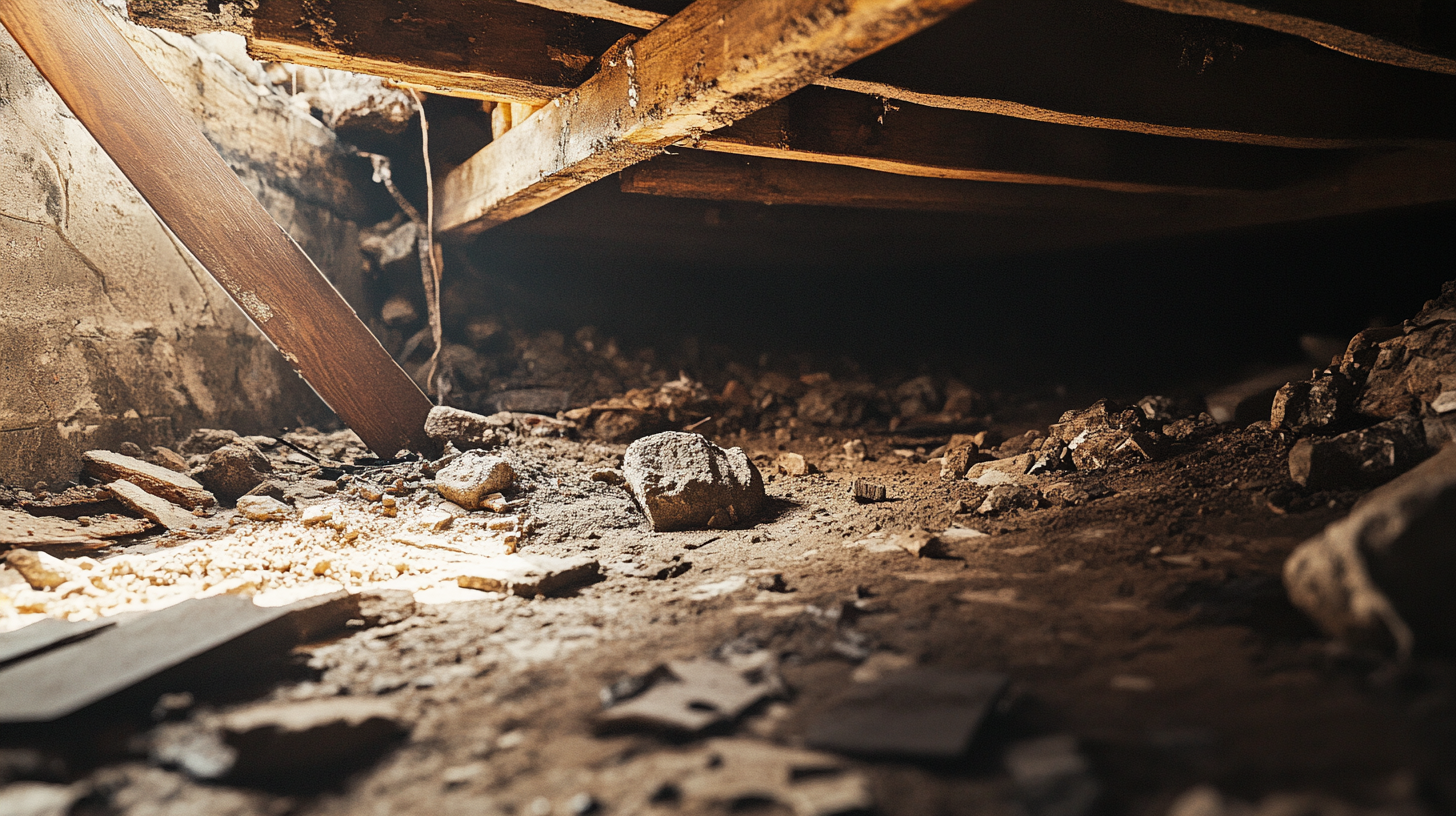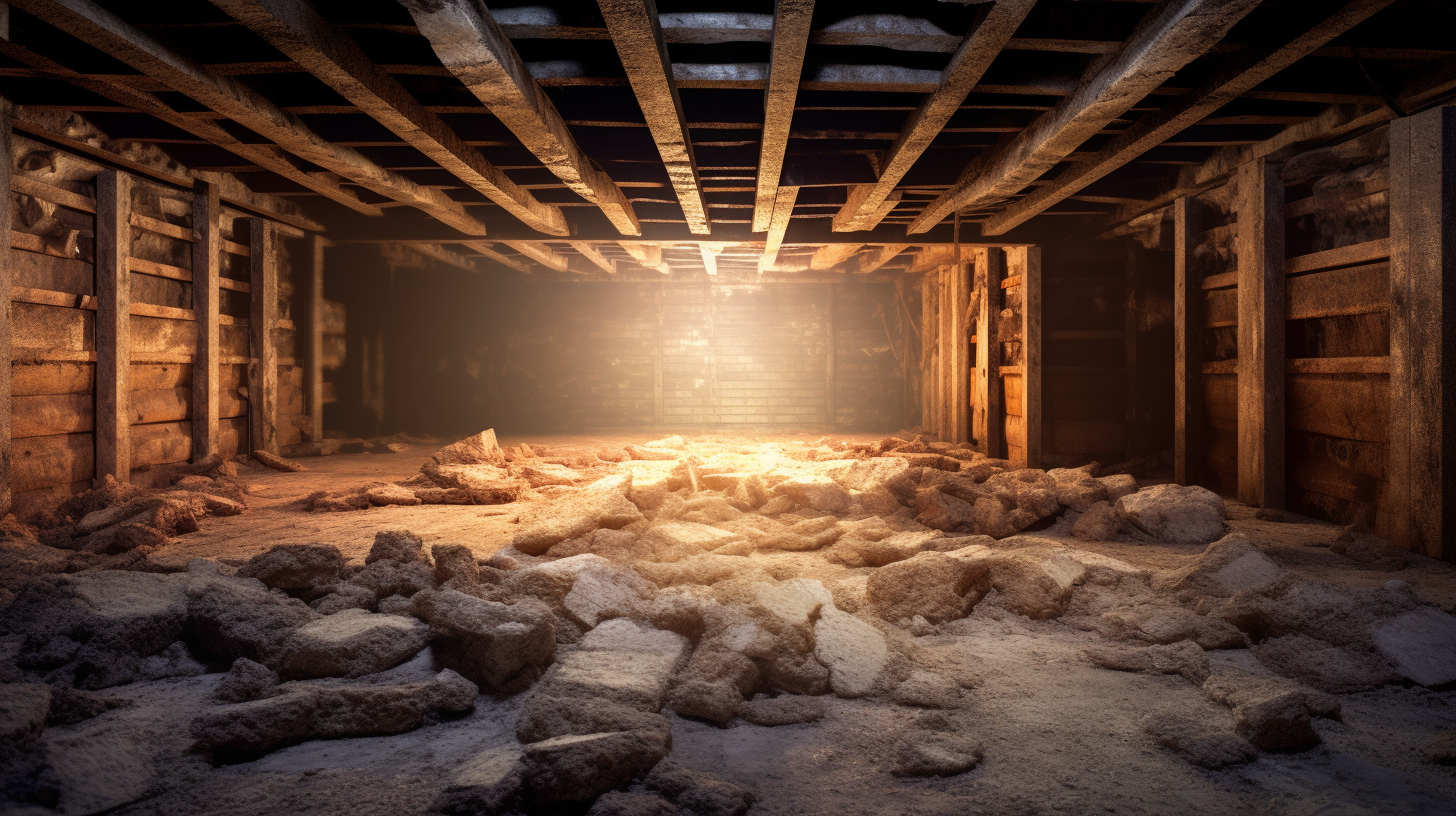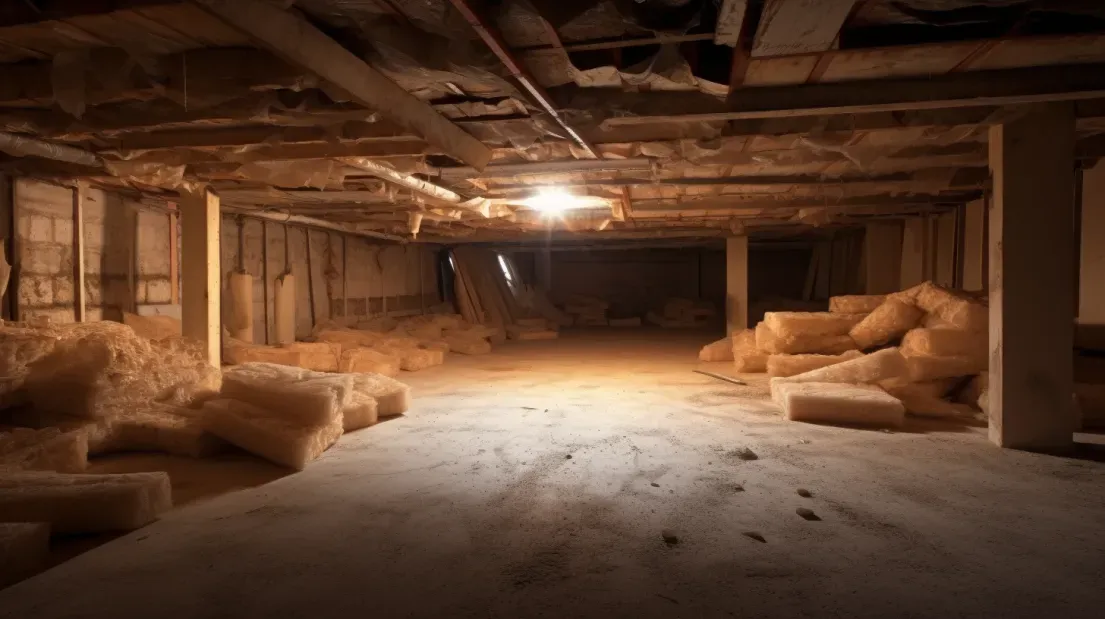Crawl spaces are often out of sight and out of mind, yet they play a crucial role in the overall health and safety of your home. Unfortunately, these dark, damp, and secluded areas can become a haven for various pests if not properly managed. Understanding the importance of pest control in crawl spaces is essential for preventing structural damage, maintaining a healthy living environment, and avoiding costly repairs. This comprehensive guide will explore why pest control is vital, the types of pests commonly found in crawl spaces, and effective strategies to keep these unwanted visitors at bay.
Why Pest Control in Crawl Spaces Matters
Pests in crawl spaces can cause significant damage to your home’s structure and pose health risks to its occupants. Wood-destroying insects like termites and carpenter ants can weaken structural beams and joists, compromising the stability of your home. Rodents and other pests can chew through electrical wiring, insulation, and plumbing, leading to fire hazards, energy inefficiency, and water damage.
Moreover, pests can carry diseases and allergens that can affect indoor air quality and the health of your family. Rodent droppings, urine, and saliva can trigger allergic reactions and respiratory problems, while insect infestations can spread bacteria and pathogens.
Common Pests Found in Crawl Spaces
Understanding the types of pests that commonly infest crawl spaces can help you take proactive measures to prevent and address infestations. Common crawl space pests include:
- Termites: These wood-destroying insects can cause extensive damage by feeding on wooden structures.
- Carpenter Ants: Similar to termites, carpenter ants excavate wood to build their nests, weakening structural components.
- Rodents: Mice and rats can cause significant damage by gnawing on wires, insulation, and pipes, and they can also spread diseases.
- Spiders: While most spiders are harmless, some species can pose health risks with their bites.
- Cockroaches: These pests can carry pathogens and allergens, contaminating food and surfaces.
Effective Pest Control Strategies
Implementing effective pest control strategies is essential for keeping your crawl space pest-free. Key strategies include:
- Moisture Control: Pests are attracted to damp environments. Ensure proper ventilation, fix leaks, and use dehumidifiers to maintain a dry crawl space.
- Sealing Entry Points: Inspect your crawl space for cracks, gaps, and openings that pests could use to enter. Seal these entry points with caulk or other appropriate materials.
- Regular Inspections: Conduct regular inspections of your crawl space to identify signs of pest activity early. Look for droppings, nests, damage, and other indicators.
- Professional Pest Control: Engage professional pest control services for comprehensive inspections and treatment plans tailored to your specific pest problems.
By understanding the importance of pest control in crawl spaces and taking proactive measures, you can protect your home from structural damage, ensure a healthy living environment, and prevent costly repairs. Stay vigilant and proactive to keep your crawl space pest-free and your home safe.
Identifying Signs of Pest Infestation
Pest infestations in crawl spaces can lead to significant structural damage and health hazards if left unchecked. Early identification of pest activity is crucial for taking prompt and effective action. This guide will help you recognize the signs of pest infestation, focusing on visual indicators, odor and noise, and structural damage.
Visual Indicators
One of the first steps in identifying a pest infestation is to look for visible signs of pest activity. These indicators can often be found in and around the affected areas.
Droppings and Urine Stains: One of the most common signs of a pest infestation is the presence of droppings and urine stains. Rodents, such as mice and rats, leave small, pellet-shaped droppings, while larger pests like raccoons produce larger feces. Urine stains can often be detected by a distinctive odor and may appear as dark or discolored spots on surfaces.
Gnaw Marks on Wood and Wires: Pests such as rodents have a constant need to gnaw to keep their teeth sharp and manageable. Look for gnaw marks on wooden beams, furniture, and electrical wiring. These marks are typically small and may appear as rough edges or holes in the material.
Nesting Materials: Pests often build nests using readily available materials. Check for signs of nesting materials such as shredded paper, leaves, insulation, or fabric. Nests are usually found in secluded areas, providing a warm and safe environment for pests to breed.
Odor and Noise
Unusual smells and sounds can also indicate the presence of pests in your crawl space. Paying attention to these sensory cues can help you detect an infestation early.
Unpleasant Smells: A strong, unpleasant smell can be a telltale sign of pest infestation. The ammonia scent from rodent urine is particularly distinctive and can be quite pungent. Additionally, the smell of decaying organic matter may indicate the presence of dead pests.
Scratching or Scurrying Sounds: Pests are often more active at night, and you may hear scratching, scurrying, or squeaking sounds coming from your crawl space. These noises can be especially noticeable during quiet hours and are indicative of pests moving around or gnawing on materials.
Nocturnal Activity: Many pests, including rodents and raccoons, are nocturnal. Increased nocturnal activity, such as sounds of movement or scratching in walls and floors, can signal an infestation.
Structural Damage
Pests can cause significant structural damage to your home, compromising its safety and integrity. Identifying early signs of damage can help prevent more extensive repairs.
Chewed Wires and Insulation: Rodents and other pests often chew on electrical wires and insulation, which can lead to short circuits, electrical fires, and energy loss. Inspect wiring for signs of gnawing and check insulation for damage or displacement.
Damaged Wood Beams and Joists: Termites, carpenter ants, and rodents can cause serious damage to wooden structures. Look for signs of wood shavings, hollow-sounding wood, or weakened beams and joists. This damage can compromise the structural stability of your home.
Soil Disturbance or Burrowing: Burrowing pests such as moles, gophers, and rats can disturb the soil around your foundation and create tunnels in your crawl space. Look for signs of soil movement, holes, or mounds that indicate burrowing activity.
By recognizing these signs of pest infestation, you can take prompt action to address the problem and protect your home from further damage. Regular inspections and proactive measures are essential for maintaining a pest-free crawl space and ensuring the health and safety of your home.
Preventative Measures to Keep Pests Out
Preventing pests from entering your crawl space is crucial for maintaining a healthy and safe home environment. By implementing effective preventative measures, you can protect your home from structural damage and health risks associated with pest infestations. This guide outlines key strategies for keeping pests out of your crawl space, focusing on sealing entry points, maintaining a clean environment, moisture control, and regular inspections and maintenance.
Sealing Entry Points
The first step in preventing pest infestations is to eliminate potential entry points that pests can use to access your crawl space.
Inspect and Seal Cracks and Gaps: Regularly inspect your crawl space for any cracks, gaps, or holes in the foundation walls, floors, and around windows. Use caulk or expanding foam to seal these openings and prevent pests from gaining entry.
Around Foundation Walls: Pay special attention to the foundation walls, as these are common entry points for pests. Seal any cracks or gaps using appropriate sealants to create a barrier against rodents, insects, and other pests.
Utility Entry Points: Pests can enter your home through gaps around utility lines, such as plumbing, electrical, and HVAC systems. Inspect these areas and use sealant or steel wool to block any openings.
Install Door Sweeps and Weather Stripping: Ensure that crawl space access doors and vents are properly sealed. Install door sweeps and weather stripping to close gaps under doors and around frames, preventing pests from slipping through.
Maintaining a Clean Environment
A clean and organized crawl space is less attractive to pests. Regular cleaning and decluttering can help deter infestations.
Remove Clutter and Debris: Pests often use clutter and debris as hiding places and nesting materials. Regularly remove any unnecessary items, such as old boxes, wood scraps, and leaves, from your crawl space.
Store Materials Off the Ground: If you need to store items in your crawl space, keep them off the ground on shelves or pallets. This reduces the chances of pests finding shelter and nesting spots among your stored materials.
Regularly Clean and Inspect the Crawl Space: Perform regular cleaning and inspections of your crawl space to maintain a clean environment. Sweep away dirt and debris, and check for signs of pest activity. Keeping the area clean helps deter pests and makes it easier to spot potential issues.
Moisture Control
Controlling moisture levels in your crawl space is essential for preventing pest infestations. Pests are attracted to damp environments, so keeping your crawl space dry is crucial.
Ensure Proper Ventilation: Proper ventilation helps reduce humidity levels and prevent moisture buildup. Install vents and fans to improve air circulation and keep the crawl space dry.
Use Dehumidifiers: In areas with high humidity, using a dehumidifier can help maintain optimal moisture levels. Choose a dehumidifier with the appropriate capacity for your crawl space and monitor humidity regularly.
Install Vapor Barriers on the Ground: A vapor barrier can effectively prevent ground moisture from entering your crawl space. Lay heavy-duty polyethylene sheets on the crawl space floor, overlapping and sealing the seams to create a continuous barrier against moisture.
Regular Inspections and Maintenance
Consistent inspections and maintenance are key to preventing pest infestations and addressing issues promptly.
Schedule Periodic Professional Inspections: Engage professional pest control services for periodic inspections. Professionals can identify potential problems early and recommend effective solutions to keep pests at bay.
Check for Signs of Pests and Address Immediately: Regularly inspect your crawl space for signs of pests, such as droppings, gnaw marks, or nests. If you detect any signs of pest activity, take immediate action to address the issue before it escalates.
Maintain and Repair Any Damage Promptly: Keep your crawl space in good repair by addressing any structural damage, leaks, or other issues promptly. Regular maintenance helps prevent conditions that could attract pests and ensures the long-term health of your home.
Using Barriers and Repellents
Keeping pests out of your crawl space is essential for maintaining a healthy and safe home environment. By using physical barriers and repellents, you can create an effective defense against unwanted intruders. This guide will explore the use of physical barriers and natural and chemical repellents to protect your crawl space from pests.
Physical Barriers
Physical barriers are a reliable method to prevent pests from entering your crawl space. These barriers create a physical block that pests cannot easily penetrate.
Install Mesh Screens Over Vents and Openings: One of the simplest yet most effective ways to prevent pests from entering your crawl space is by installing mesh screens over vents and other openings. Use fine mesh screens that can block even the smallest pests, such as insects, while still allowing for proper ventilation. Ensure that the screens are securely fastened and check them regularly for any damage.
Use Rodent-Proof Materials for Sealing: When sealing cracks, gaps, and other entry points, choose materials that are resistant to gnawing by rodents. Steel wool, copper mesh, and concrete are excellent options for sealing areas that pests might exploit. These materials are difficult for rodents to chew through, providing a long-lasting barrier.
Set Up Traps and Bait Stations: Traps and bait stations can be an effective physical deterrent for rodents and other pests. Place traps in areas where you suspect pest activity, such as near entry points or along walls. Bait stations can help manage rodent populations by attracting and killing them before they can establish themselves in your crawl space. Always use traps and bait stations according to the manufacturer's instructions for safety and effectiveness.
Natural and Chemical Repellents
In addition to physical barriers, using natural and chemical repellents can enhance your pest control efforts by deterring pests from entering or staying in your crawl space.
Use Essential Oils (Peppermint, Eucalyptus): Essential oils like peppermint and eucalyptus have strong scents that many pests find unpleasant. These natural repellents can be used to deter pests such as rodents, spiders, and insects. Soak cotton balls in essential oil and place them around the crawl space, especially near potential entry points. Reapply the oils regularly to maintain their effectiveness.
Apply Commercial Pest Repellents: Commercial pest repellents are available in various forms, including sprays, granules, and electronic devices. These products are formulated to repel a wide range of pests. When choosing a commercial repellent, select one that is appropriate for the specific pests you are targeting. Follow the instructions carefully to ensure safe and effective use.
Ensure Safe and Appropriate Use of Chemicals: When using chemical repellents, it is crucial to prioritize safety. Read and follow all label instructions and warnings to avoid harmful exposure to yourself, your family, and pets. Consider using eco-friendly and non-toxic options whenever possible. Additionally, ensure that chemicals are stored securely and out of reach of children and animals.
Professional Pest Control Services
Dealing with pests in your crawl space can be a challenging and frustrating experience. While some minor infestations can be managed with DIY methods, there are times when professional pest control services are necessary. This guide will help you understand when to call a professional and the benefits of using professional services for pest control.
When to Call a Professional
Certain situations require the expertise and experience of professional pest control services to effectively address and resolve pest problems.
Persistent Infestations: If you have tried DIY pest control methods and the infestation persists, it is time to call a professional. Persistent infestations can indicate a larger underlying problem that requires specialized treatment and expertise to resolve effectively.
Extensive Structural Damage: When pests cause significant damage to the structural components of your home, such as wood rot, chewed wiring, or compromised insulation, professional intervention is crucial. Experts can assess the extent of the damage, provide effective treatments, and recommend repairs to restore the integrity of your home.
Health and Safety Concerns: Pests can pose serious health risks through bites, stings, or the spread of diseases. If the presence of pests in your crawl space is causing health concerns for you or your family, professional pest control services can ensure safe and thorough removal. Professionals are trained to handle hazardous situations and use appropriate protective measures.
Benefits of Professional Services
Engaging professional pest control services offers several advantages that DIY methods cannot match.
Comprehensive Inspection and Treatment: Professionals conduct thorough inspections to identify all potential entry points, nesting areas, and the extent of the infestation. This comprehensive approach ensures that no areas are overlooked and that the treatment is targeted and effective. Professionals use advanced tools and techniques to detect and treat pest problems comprehensively.
Safe and Effective Pest Control Methods: Professional pest control services use safe and effective methods to eliminate pests. They have access to specialized products and equipment that are not available to the general public. These products are formulated to be more effective and often have longer-lasting results. Additionally, professionals are trained to use these products safely, minimizing any risk to your family and pets.
Long-term Prevention Plans: Beyond immediate pest removal, professional services include long-term prevention strategies to keep pests from returning. This may involve sealing entry points, installing barriers, and recommending changes to landscaping or home maintenance routines. Professionals can also provide regular maintenance and monitoring to ensure that your home remains pest-free over time.
In conclusion, while DIY pest control methods can be effective for minor issues, persistent infestations, extensive structural damage, and health concerns require professional intervention. The benefits of professional pest control services, including comprehensive inspection and treatment, safe and effective methods, and long-term prevention plans, make them an invaluable resource for maintaining a healthy, pest-free home.
Case Studies and Success Stories
Understanding the importance of proper pest control in crawl spaces is best illustrated through real-life examples and success stories. These case studies provide valuable insights into the challenges homeowners face and the effective solutions they implement to maintain a pest-free environment. This guide will highlight homeowner experiences, before and after scenarios, and lessons learned and best practices to inspire and inform your own pest control efforts.
Real-Life Examples
Homeowner Experiences and Solutions: Hearing from homeowners who have successfully managed pest infestations in their crawl spaces can provide practical advice and encouragement. These real-life examples showcase the steps taken to identify the problem, the methods used to address it, and the results achieved.
Example 1: Battling a Rodent Infestation: A homeowner in a suburban area discovered a rodent infestation in their crawl space. They noticed droppings and chewed wires. After sealing entry points and setting up traps, they also installed a dehumidifier to control moisture levels, which deterred future infestations. The homeowner's persistence and comprehensive approach eliminated the rodents and prevented recurrence.
Example 2: Dealing with Termite Damage: Another homeowner found extensive termite damage in their crawl space. They hired a professional pest control service that treated the area with termiticides and installed bait stations. The professional also recommended installing a vapor barrier and improving ventilation to keep the space dry. The combined efforts successfully eradicated the termites and prevented further damage.
Before and After Scenarios
Before and After Scenarios: Visualizing the transformation of a crawl space before and after pest control measures can be powerful. These scenarios illustrate the impact of effective pest management and highlight the improvements in both structural integrity and living conditions.
Scenario 1: Mold and Mildew Removal: Before: A crawl space with visible mold growth, high humidity, and a musty odor. After: Post-treatment with mold remediation, installation of a dehumidifier, and improved ventilation, the crawl space is dry, odor-free, and safe from mold recurrence.
Scenario 2: Pest-Free Crawl Space: Before: A cluttered crawl space with signs of pest activity, such as droppings and nesting materials. After: The space is cleared of clutter, entry points are sealed, and regular maintenance is implemented, resulting in a clean, pest-free environment.
Lessons Learned and Best Practices
Lessons Learned and Best Practices: Learning from others' experiences can help you avoid common pitfalls and adopt effective strategies for your own home. Here are some key lessons and best practices derived from successful case studies:
Lesson 1: Regular Inspections Are Crucial: Frequent inspections help identify and address pest issues early. Homeowners who perform regular checks can prevent small problems from becoming major infestations.
Lesson 2: Comprehensive Solutions Work Best: Combining multiple strategies, such as sealing entry points, controlling moisture, and using traps or repellents, provides a more effective defense against pests. Addressing all potential factors contributing to infestations is essential for long-term success.
Lesson 3: Professional Help Can Be Invaluable: When dealing with extensive infestations or structural damage, professional pest control services offer expertise and resources that DIY methods may lack. Professionals can provide targeted treatments and ongoing maintenance plans to ensure lasting results.
Lesson 4: Prevention Is Key: Implementing preventative measures, such as installing vapor barriers, maintaining cleanliness, and improving ventilation, can significantly reduce the risk of future infestations. Prevention is always more cost-effective and less stressful than dealing with an established problem.
By exploring these case studies and success stories, you can gain a deeper understanding of the importance of proper pest control in crawl spaces. The real-life examples, before and after scenarios, and lessons learned provide valuable insights and practical advice to help you maintain a healthy, pest-free home.
FAQs
Contact Trench Guys Today!
Trench Guys will do everything we can to ensure your experience with us is excellent.
Request A FREE Estimate
Request a Free Estimate Form
Checkout Recent Post




Got a Question? We’re Here to Help.
You can arrange an appointment or make an enquiry by phone or email, orget in touch to us via our contact form.



